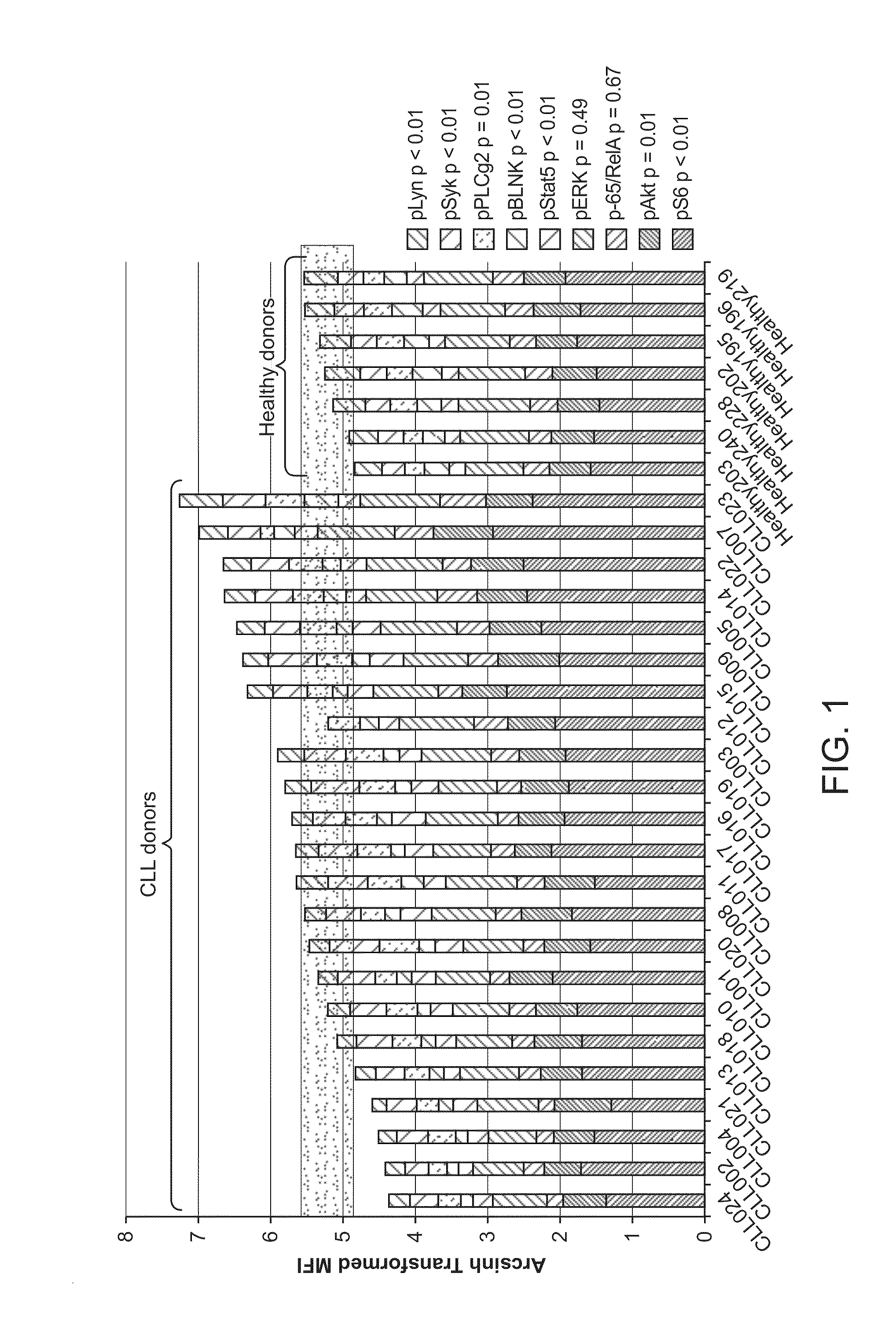Methods for diagnosis, prognosis and methods of treatment
a technology of prognosis and treatment, applied in the field of diagnosis, prognosis and treatment methods, can solve the problems of short survival time of patients resistant to therapy, inability to accurately understand and inability to accurately diagnose the molecular events underlying these transformations
- Summary
- Abstract
- Description
- Claims
- Application Information
AI Technical Summary
Benefits of technology
Problems solved by technology
Method used
Image
Examples
example 1
Signaling Pathways in CLL Samples
Cell Preparation
[0273]Intracellular network responses of CLL patient samples subjected to modulators of signaling, were analyzed using flow cytometry-based Single Cell Network Profiling (SCNP). Of the many signaling modulators studied, H2O2 treatment (a general inhibitor of tyrosine phosphatase activity) stratified. CLL patients into two subsets, one showing augmented. BCR signaling and the second with little or no response. These data suggest that differential phosphatase activity with consequent aberrations in tonic (ligand independent) signaling proximal to BCR signaling was driving the biology of these two patient groups. Importantly, signaling in patients was reflected in all the measured components of the canonical B cell receptor network. Thus, p-Lyn, p-Syk, p-BLNK, p-PLCγ2, p-Erk and p-Akt showed parallel phosphorylation responses and were either augmented in unison, or not activated at all. In vitro F-Ara-A—exposure of samples from the same ...
PUM
| Property | Measurement | Unit |
|---|---|---|
| pore sizes | aaaaa | aaaaa |
| temperature | aaaaa | aaaaa |
| concentration | aaaaa | aaaaa |
Abstract
Description
Claims
Application Information
 Login to View More
Login to View More - R&D
- Intellectual Property
- Life Sciences
- Materials
- Tech Scout
- Unparalleled Data Quality
- Higher Quality Content
- 60% Fewer Hallucinations
Browse by: Latest US Patents, China's latest patents, Technical Efficacy Thesaurus, Application Domain, Technology Topic, Popular Technical Reports.
© 2025 PatSnap. All rights reserved.Legal|Privacy policy|Modern Slavery Act Transparency Statement|Sitemap|About US| Contact US: help@patsnap.com



